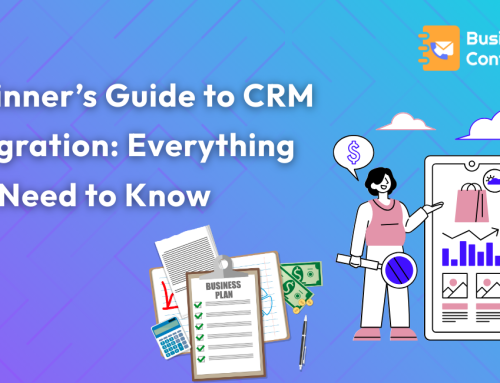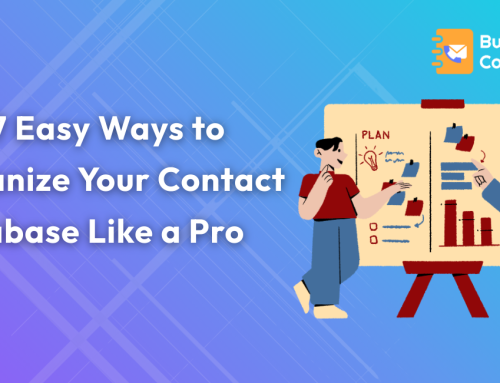Business contact data is one of your company’s most powerful assets, but only if you know how to use it. Many businesses collect contacts but fail to leverage them effectively. Below, we explore creative ways to use business contact data to boost revenue, improve engagement, and maximize ROI.
1. Personalize Every Interaction
Personalization is no longer optional; it’s essential. Use business contact data to segment your audience by demographics, industry, location, and previous interactions. This allows you to send messages that resonate with each group. Personalized communication builds trust and increases conversion rates.
Example: If a lead previously downloaded a marketing guide, send them a follow-up email offering a webinar or consultation relevant to that topic. This shows that you understand their needs and position your company as a solution provider. Include the recipient’s name and company in your emails or calls to make interactions feel genuinely one-on-one.
2. Prioritize High-Quality Leads
Not all leads bring the same revenue potential. Analyze your contact data to identify leads with the highest likelihood of converting. Focus on factors like company size, purchase intent, engagement level, and past interactions.
Example: Use lead scoring to rank contacts. Those with high engagement, such as frequent website visits or ebook downloads, can be flagged as hot leads for immediate follow-up. Prioritizing high-quality leads ensures your sales team invests their energy where it matters most, reducing wasted effort and shortening the sales cycle.
3. Boost Cross-Selling and Upselling Opportunities
Your existing customer base is a goldmine for revenue growth. By examining past purchases, preferences, and engagement, you can identify opportunities for cross-selling complementary products or upselling premium offerings.
Example: If a client bought a basic software package, reach out with a tailored offer for an advanced version or an add-on feature that enhances their workflow. By using business contact data creatively in this way, you increase customer lifetime value while providing solutions that genuinely help your clients.
4. Retain Customers Through Engagement
Customer retention costs less than acquiring new customers, and contact data is key to maintaining relationships. Monitor purchase patterns, interaction frequency, and satisfaction levels to engage customers proactively.
Example: Send a thank-you email after a purchase, provide relevant updates, or offer loyalty rewards. For clients who haven’t engaged in months, send a personalized re-engagement message. By staying connected and showing you value your customers, you foster loyalty that drives repeat revenue.
5. Optimize Lead Nurturing Campaigns
Leads aren’t always ready to buy immediately. Use business contact data to craft targeted nurturing campaigns. Segment leads based on their stage in the buyer’s journey and deliver relevant content, offers, or guidance at the right time.
Example: A lead who downloaded a case study might receive a follow-up email with a demo invitation, while a newer lead receives educational content. Well-structured nurturing campaigns keep prospects engaged and gradually move them closer to conversion.
6. Make Data-Driven Sales Forecasts
Accurate forecasting relies on solid data. By analyzing contact information, past buying behavior, and engagement trends, you can predict revenue more accurately and plan resources effectively.
Example: If a particular industry segment shows increasing engagement, you can allocate more sales resources to pursue leads from that sector, increasing your chances of hitting revenue targets. Data-driven forecasts reduce uncertainty and allow smarter business decisions.
7. Build Stronger Relationships with Key Accounts
Business contact data helps you identify key decision-makers and influencers within target organizations. Engage them with personalized solutions, thoughtful communication, and timely follow-ups.
Example: Track interactions, meeting notes, and communication preferences to ensure every conversation adds value. Personalized engagement strengthens trust, encourages repeat business, and opens doors for referrals. Strong relationships transform ordinary leads into loyal, long-term partners.
8. Automate Repetitive Tasks Without Losing Personalization
Automation tools can use your contact data to streamline email sequences, follow-ups, and CRM updates. This saves time while maintaining consistency in outreach.
Example: Set up an automated email drip campaign for new leads, personalized based on industry, previous downloads, or engagement patterns. Automation ensures no lead falls through the cracks, freeing your sales team to focus on closing deals.
9. Analyze Data to Identify Growth Opportunities
Your contact data can reveal hidden revenue opportunities. Analyze patterns in engagement, product interest, and industry trends to uncover untapped markets or cross-sell possibilities.
Example: If a segment of leads frequently engages with content about a specific product feature, create targeted campaigns to highlight related offerings. Data-driven insights allow you to refine strategies and act on opportunities before competitors do.
10. Ensure Data Accuracy for Maximum Impact
The most creative strategies fail if your contact data is outdated or inaccurate. Regularly clean your database to remove duplicates, correct errors, and update contact details.
Example: Implement a quarterly data-cleaning process to ensure your campaigns reach the right audience at the right time. Accurate data increases campaign efficiency, improves engagement, and maximizes ROI.
Conclusion
Business contact data is more than a list; it’s a strategic tool for revenue growth. By using creative ways to use business contact data, you can personalize marketing, prioritize high-value leads, retain customers, and uncover new growth opportunities. Start applying these strategies today and transform your contact database into one of your most profitable business assets.




